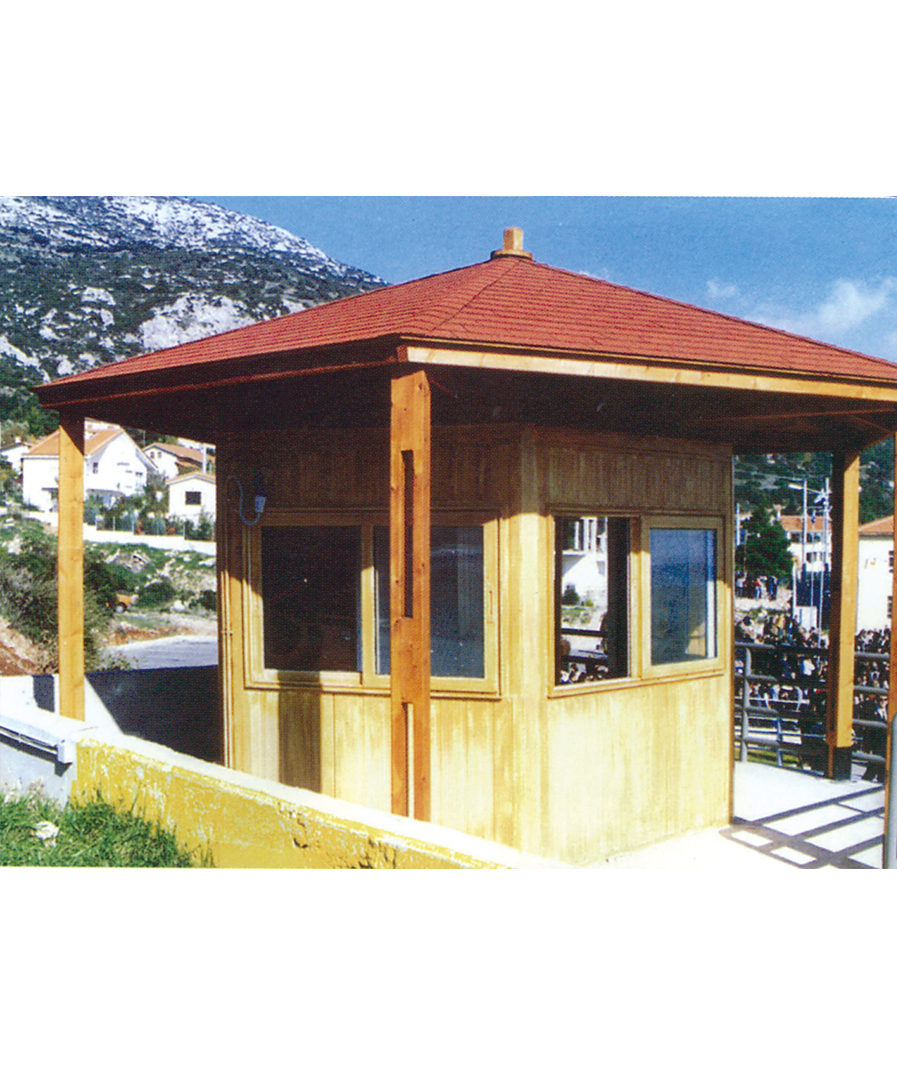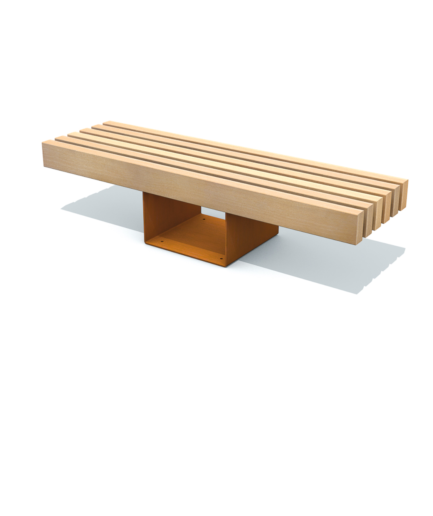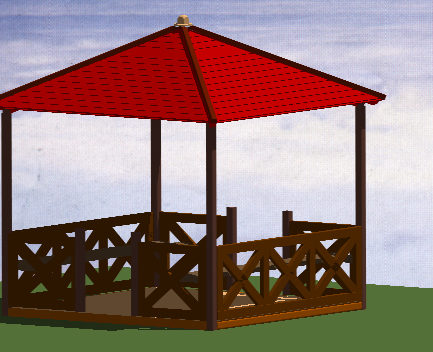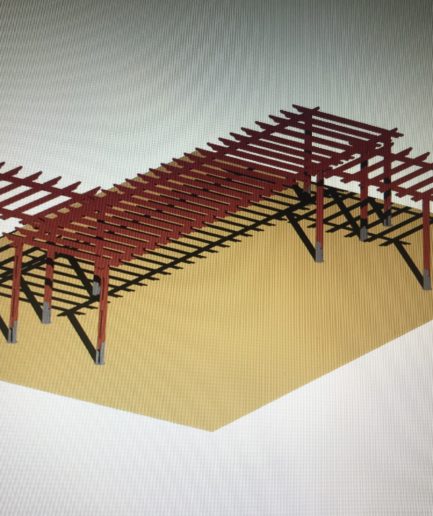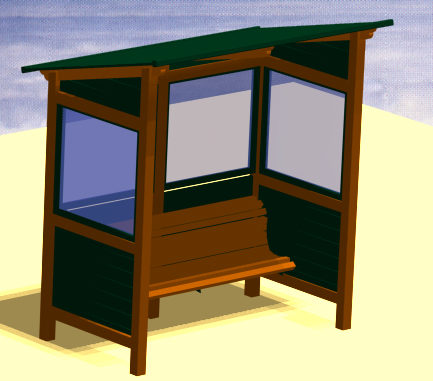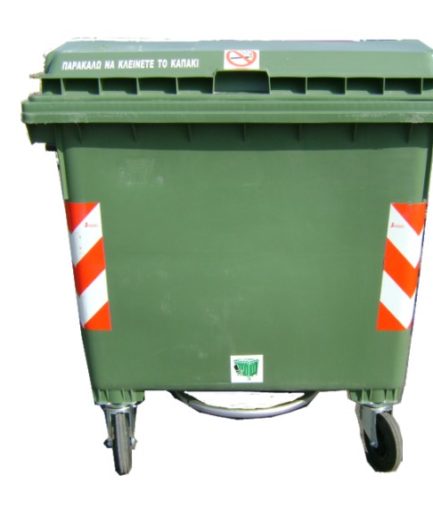PERGOLAS 0020-352
0020-352
The wooden hexagon cover has total dimensions: 300 cm long, 260 cm wide and 290 cm high. It is supported by six columns of 13,5×14,5 cm.
The columns consist of two 4.5×14.5cm cross-sections that are joined in three parts, at both ends and in the middle, with three 4.5×14.5x30cm blocks thus forming the 13.5×14.5cm cross section .
The columns at the top are joined by horizontal beams of 5×10 cm and 150 cm long, which are joined in the center of the hexagon at a height of 320 cm.
On the sloping beams is placed a robot and on it asphalt (GLOBE SEAL) or tile.
For mounting the instrument, two 0.4 mm thick metal plates P-shaped and 60 cm long are mounted.
These two “P” hug the column and are connected by screws 5 / 8X25 cm. These metal plates are placed in a 30 cm deep pit but retaining the column 10 cm from the ground so as not to erode wood from soil moisture.
All the wooden parts of the instrument after being properly treated (edging, edging, rubbing, etc.) are painted with a layer of water-soluble paint to give the wood its natural shade and then with two layers of non-toxic special varnishes to protect the wood. from external stresses. The varnishes and colors that protect the wooden parts are specially designed for the climate of our country (temperature changes, open or closed areas etc.) are absolutely harmless to the users (they do not contain lead and other heavy metals) and give great resistance to our constructions.
TIMBER
The wood used is composite non-stick Swedish pine timber, in accordance with EN 351. It is manufactured with special compound (welding of wood) in different sections depending on the intended use.
COMPOSITE wood is 40% stronger than whole wood. It has a strength of 360 kp / m2 and a specific weight of about 480 kg / m3.
It contains about 15% moisture
Contains minimal juices (resin) compared to other pine family trees in other countries (weather in northern Sweden up to -25 ° C)
It has a thermal conductivity of s = 0.10 Kcal / Mho and sound insulation 3.5 times greater than concrete or bricks of equal thickness.
It has antimagnetic properties and is a poor conductor of electricity
It is resistant to fire and is classified in categories F30 and F60 (by DIN 4120) according to its cross section.
When the outer part of the cross-section burns, its interior protects and retains its durability.
It is processed just like commercial wood
It retains its shape and distorts or creates minimal fractures
Annual wood rings are usually perpendicular to the long side of the cross-section with a significant increase in the mechanical strength of this surface when applied to floors.
All corners of the wood are planed with a radius of about 5 mm.
TABLE COLORED COLORS
The plywood elements required for our constructions are approximately 20 mm thick and are made of 1.5 mm thick laminated wood with pressurized heat sealant using non-toxic phenolic base resins. They are painted with water-soluble paints to which no seals, thinners or paints containing lead, chromium, cadmium or other heavy metals have been attached. The colors are also very resistant to adverse weather conditions.
The above plywood sheets are in accordance with EN 314-2. The quality of the plywood is such that no further processing is required before painting, such as, for example, stocking, and reliefs and themes can be engraved.
METALLIC ELEMENTS
The metallic elements used in the manufacture of the equipment (screws, connectors, etc.) are made of metals either thermo-galvanized or electro-galvanized, where the surface preparation has been preceded by sandblasting or stainless steel. The dimensions and cross-sections of the metallic elements are sufficient to accommodate (with an appropriate safety factor) the loads for which they have been designed to withstand corrosion and adverse weather conditions.
PAINTS
For their anticorrosive protection, the metal parts are processed to release them, followed by a coating of polyzinc (zinc) and then electrostatic, two-layer polyester powder coating.
All production work processes for the processing of raw materials are carried out according to:
The ISO 9001: 2015 quality system
The ISO 14001: 2015 Environmental Management System

